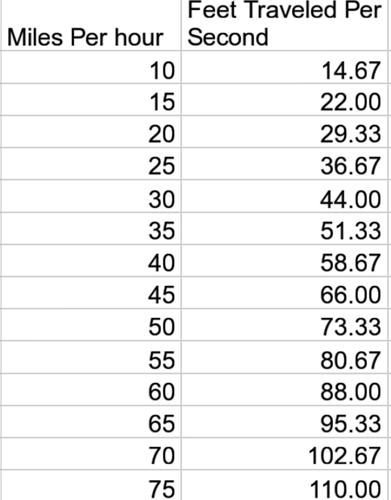.jpg.aspx?lang=en-US)
It was a foggy, misty morning in Nebraska, and traffic was light due to the early hour. I was driving in the right lane, as usual, looking ahead into the fog in front of me. The fog was pretty dense with visibilities a quarter mile or less. These were not conditions that screamed, “Punch it, Margaret!” (How many remember that commercial)?
I looked in my mirror and saw a car coming up my left side with a truck right behind it, and when I say right behind it, I mean RIGHT behind it. The driver of the truck was less than 10 feet off the bumper of the car, going at least 70 mph. In those instances, I always wonder what that “Professional” driver is thinking. Are they trying to bully the car out of the way, or are they just over-confident in their driving abilities? I don’t have that much confidence, or trust in the person, in the vehicle, in front of me, to ever ride somebody’s bumper that close. Nor do I have that much confidence in their equipment or mine. Mechanical failures can happen at any moment.
How Quickly Can You React?
Reaction times vary from person to person. Outside factors and distractions will increase those times. From recognizing the light or incident, deciding how to react to it, and then reacting, the time can range from .7 to 3 seconds, with the average among motorists being 2.3 seconds according to the most recent study I could find.
At 70 mph the vehicle is covering 102.67 feet per second. With a 2.3 second reaction time, a vehicle travelling 70 mph will travel 236.14 feet before the driver reacts. Even at .7 seconds the vehicle will travel almost 72 feet before a driver can react to a situation unfolding in front of them. Following 10, 20, even 70 feet behind a driver can lead to catastrophic consequences. So why would one do it?
Could You Stop in Time?
This is how I handle it. When driving down the road and following traffic, I ask one simple question, “if the vehicle in front of me came to a dead stop, would I be able to stop in time?” I take into account weather conditions, speed, load weight, and terrain when making this calculation. Going downhill with a heavy load will require longer stopping distance than a light load going uphill would.
The general rule has changed over time. It used to be a flat 3 seconds but now has changed into this general formula: Allow yourself one vehicle length per 10 mph. This of course is a general rule, conditions may require a greater distance.
This should go without saying, but if you are riding someone’s bumper to bully them down the road, STOP! This is not only dangerous, but leaves the motoring public a bad impression. You aren’t impressing anybody with your “skills”.
With all the pile-ups we see every year, increasing your following distance will not only take some stress off of you, it may save someone’s life, including your own.
Below is a quick chart to show how many feet per second you are travelling at certain speeds Stay safe and healthy and thanks for doing all you do!
